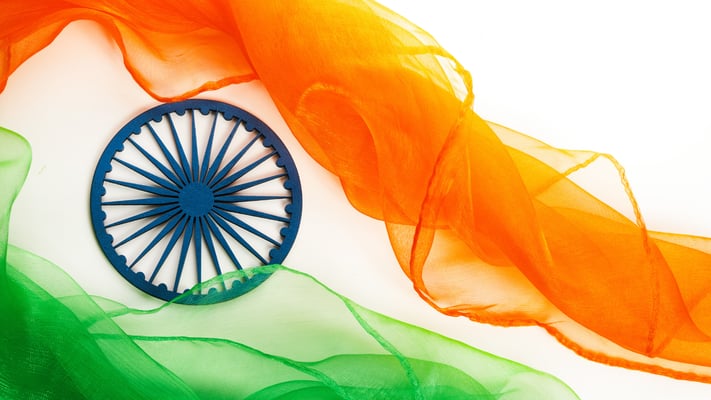India's Growth Story: Democracy, Development, Demand & Decisiveness

India’s multi-faceted progress and growth, particularly over the last decade, has been truly remarkable, setting it in a highly promising position to achieve its aspirational goal of "Viksit Bharat" (Developed India) by 2047, when it celebrates the centenary of its independence.
In 2014, Prime Minister Narendra Modi spearheaded the victory of the Bharatiya Janata Party (BJP) to win an absolute majority in the Parliamentary elections, the first time that a single party had won an outright majority on its own in 30 years. He repeated the feat with an even larger majority in 2019.
In 2024, when the whole world witnessed a wave of anti-incumbency, PM Modi again rode back to victory convincingly for the third consecutive term with the support of BJP’s alliance partners. Following the Parliamentary elections, BJP and its partners decisively won elections to state legislatures in major states like Maharashtra and Haryana, thereby emphatically demonstrating its irrefutable support amongst the common people. Democracy has been India’s undeniable strength and leitmotif since independence, which has stood it in great stead to achieve a peaceful, stable, secure, and better life for its people.
The last decade has also witnessed impressive growth in India’s economic expansion. In 2014, India was the tenth largest economy in the world. Today, it has climbed five places to become the fifth largest economy. In another two years, it is expected to move up to the third place, surpassing Germany and Japan. India is now the fastest growing major economy, with its GDP having risen by 8.2% and 6.4% in 2022 and 2023 respectively, and a projected growth rate of 6.6% for FY 2024. It is expected to grow at impressive rates in the coming years and become a US$ 5 trillion economy by 2030. Managing Director of the International Monetary Fund has stated that India is the ray of hope in an otherwise gloomy global economic environment.
Nearly 70% of India's GDP is driven by domestic demand and private consumption, further fueled by government spending, investments, and exports. This has been achieved through various structural reforms, including the implementation of the Goods and Services Tax (GST) regime, which streamlined the indirect tax system, fostering business ease and tax compliance. Additionally, emphasis on digitalisation (including Digital Public Infrastructure) and innovation has led to the rise of startups and expanded the digital economy, with initiatives like Digital India enhancing technology access. Initiatives such as Make in India and the Product Linked Incentive Scheme have been pivotal in driving growth. Furthermore, the focus on renewable energy underscores India’s commitment to sustainable development.
India enjoys a significant demographic dividend that supports its economic rise. About 65% of its population is below the age of 35, with just about 5% being above 65 years. The median age is around 28 years, much lower than the median age of other major economies like the United States and China. While the rest of the world is ageing, India’s young population is set to contribute to its consumption, production, and overall economic growth. India is home to more than 600 million people aged between 18 and 35 years, and its demographic dividend is expected to persist until at least 2055–56, peaking around 2041 when the share of the working-age population (20–59 years) is expected to hit 59%. India is fully determined to harness this opportunity.
India’s ambitions to become a global manufacturing hub and technology leader are closely linked to the upskilling of its workforce. Nearly 10 million youth benefit annually from the Skill India programme. Getting more women into the workforce is also a key focus for India’s future growth.
In foreign relations, India has pursued a bold, proactive, and confident policy. It has built a strong "Partnership of Trust" with the United States, its largest trading partner in goods and services, and second largest supplier of sophisticated defence equipment. India and the US engage in around 60 substantive dialogue mechanisms spanning areas like technology, cybersecurity, energy, health, education, and security.
India has maintained its time-tested and substantial ties with Russia by importing significant quantities of Russian oil, and has refrained from directly criticizing Russia’s actions in Ukraine. Additionally, India has stood firm against the aggressive and expansionist policies of China, following a "Neighborhood First" policy and extending non-reciprocal, generous support to its neighboring countries in times of need and for their economic development. India’s outreach to the Global South, exemplified by the supply of more than 300 million COVID-19 vaccines to over 100 countries, has reinforced its role as a "Vishwa-Bandhu" (Friend to the World).
India’s robust economic growth and assertive foreign policy over the last decade have enhanced its global prestige and instilled hope and confidence in its people, propelling it toward its goal of becoming a peaceful, prosperous, and developed country by 2047, marking 100 years of independence.
Ambassador Ashok Sajjanhar has served for over three decades in the Indian Foreign Service. He has held diplomatic positions as Ambassador to Kazakhstan, Sweden, and Latvia, and has worked in Washington DC, Brussels, Dhaka, and Bangkok, among other nations.
India’s multi-faceted progress and growth, particularly over the last decade, has been truly remarkable, setting it in a highly promising position to achieve its aspirational goal of "Viksit Bharat" (Developed India) by 2047, when it celebrates the centenary of its independence.
In 2014, Prime...
India’s multi-faceted progress and growth, particularly over the last decade, has been truly remarkable, setting it in a highly promising position to achieve its aspirational goal of "Viksit Bharat" (Developed India) by 2047, when it celebrates the centenary of its independence.
In 2014, Prime Minister Narendra Modi spearheaded the victory of the Bharatiya Janata Party (BJP) to win an absolute majority in the Parliamentary elections, the first time that a single party had won an outright majority on its own in 30 years. He repeated the feat with an even larger majority in 2019.
In 2024, when the whole world witnessed a wave of anti-incumbency, PM Modi again rode back to victory convincingly for the third consecutive term with the support of BJP’s alliance partners. Following the Parliamentary elections, BJP and its partners decisively won elections to state legislatures in major states like Maharashtra and Haryana, thereby emphatically demonstrating its irrefutable support amongst the common people. Democracy has been India’s undeniable strength and leitmotif since independence, which has stood it in great stead to achieve a peaceful, stable, secure, and better life for its people.
The last decade has also witnessed impressive growth in India’s economic expansion. In 2014, India was the tenth largest economy in the world. Today, it has climbed five places to become the fifth largest economy. In another two years, it is expected to move up to the third place, surpassing Germany and Japan. India is now the fastest growing major economy, with its GDP having risen by 8.2% and 6.4% in 2022 and 2023 respectively, and a projected growth rate of 6.6% for FY 2024. It is expected to grow at impressive rates in the coming years and become a US$ 5 trillion economy by 2030. Managing Director of the International Monetary Fund has stated that India is the ray of hope in an otherwise gloomy global economic environment.
Nearly 70% of India's GDP is driven by domestic demand and private consumption, further fueled by government spending, investments, and exports. This has been achieved through various structural reforms, including the implementation of the Goods and Services Tax (GST) regime, which streamlined the indirect tax system, fostering business ease and tax compliance. Additionally, emphasis on digitalisation (including Digital Public Infrastructure) and innovation has led to the rise of startups and expanded the digital economy, with initiatives like Digital India enhancing technology access. Initiatives such as Make in India and the Product Linked Incentive Scheme have been pivotal in driving growth. Furthermore, the focus on renewable energy underscores India’s commitment to sustainable development.
India enjoys a significant demographic dividend that supports its economic rise. About 65% of its population is below the age of 35, with just about 5% being above 65 years. The median age is around 28 years, much lower than the median age of other major economies like the United States and China. While the rest of the world is ageing, India’s young population is set to contribute to its consumption, production, and overall economic growth. India is home to more than 600 million people aged between 18 and 35 years, and its demographic dividend is expected to persist until at least 2055–56, peaking around 2041 when the share of the working-age population (20–59 years) is expected to hit 59%. India is fully determined to harness this opportunity.
India’s ambitions to become a global manufacturing hub and technology leader are closely linked to the upskilling of its workforce. Nearly 10 million youth benefit annually from the Skill India programme. Getting more women into the workforce is also a key focus for India’s future growth.
In foreign relations, India has pursued a bold, proactive, and confident policy. It has built a strong "Partnership of Trust" with the United States, its largest trading partner in goods and services, and second largest supplier of sophisticated defence equipment. India and the US engage in around 60 substantive dialogue mechanisms spanning areas like technology, cybersecurity, energy, health, education, and security.
India has maintained its time-tested and substantial ties with Russia by importing significant quantities of Russian oil, and has refrained from directly criticizing Russia’s actions in Ukraine. Additionally, India has stood firm against the aggressive and expansionist policies of China, following a "Neighborhood First" policy and extending non-reciprocal, generous support to its neighboring countries in times of need and for their economic development. India’s outreach to the Global South, exemplified by the supply of more than 300 million COVID-19 vaccines to over 100 countries, has reinforced its role as a "Vishwa-Bandhu" (Friend to the World).
India’s robust economic growth and assertive foreign policy over the last decade have enhanced its global prestige and instilled hope and confidence in its people, propelling it toward its goal of becoming a peaceful, prosperous, and developed country by 2047, marking 100 years of independence.
Ambassador Ashok Sajjanhar has served for over three decades in the Indian Foreign Service. He has held diplomatic positions as Ambassador to Kazakhstan, Sweden, and Latvia, and has worked in Washington DC, Brussels, Dhaka, and Bangkok, among other nations.










Leave a Comment